This blog was written by Madeline Jones, Senior Communication Executive at Elevate Communication.
While ESG (Environmental, Social and Governance) has grown in the public sphere in recent years, we now find ourselves confronted by the results, or lack thereof, of our ESG strategies.
Lately we have seen more and more businesses making news for missing their ESG targets, having to minimise or renegotiate their commitments. So naturally, the question that emerges is how we as communicators introduce sustainability to ESG.
Yes, ‘Sustainable ESG’ sounds tautological. But the qualifier of ‘sustainability’ is vital for corporates to remain accountable, transparent, and authentic within their social responsibilities.
When we talk about sustainability, it goes beyond the idea of ‘being green’. It is introducing practices, timelines, and a shared vision across all organisational levels that can be sustained.
Sustainable ESG starts with a simple philosophy; that perception is reality.
As basic as the thought of ‘seeing is believing’ is, it is a key driver behind the development, implementation, and success of an ESG strategy.
RepTrak’s 2023 Most Reputable Companies Report shared that more than 90% of companies surveyed said that their ESG efforts did not match the public’s perception of their ESG efforts. That essentially, action does not meet the perception or communication.
This, coupled with the growing inclination of consumers to purchase from brands they perceive as ethical, calls for businesses to ‘walk the talk’ at the bare minimum.
In the current climate, where businesses are discovering both an overcommitment in goals, and short fallings in the results of their environmental and social impact, greater emphasis must be placed on sustainability for the business in the planning stages of ESG strategies.
Aligning stakeholder expectation
In developing an ESG strategy it’s easy to get bogged down in the tangible commitments that align to environmental and social initiatives—things like the removal of single use plastic and setting a diversity quota within the leadership team. But once these actions are taken, then what?
Without sustained action, beyond identifying a cause to support or an activity launch, there is a significant drop off in support for a business. Reportedly, more than one third of people have felt “betrayed by what a company stands for” as a result of inaction.
What it comes down to is a breakdown in expectation—from your external audiences, and your internal brand advocates.
By breaking down ‘ESG’ as its singular components of Environmental, Social, and Governance, we imagine them each as a silo. The ‘E’ and ‘S’ referring to the long- and short-term community commitments, with the ‘G’ to the business operations and reporting.
Within this siloing, two distinct camps of stakeholders emerge, where those who are ‘purpose driven’ (consumers and employees) align more with Environmental and Social, and those who are ‘results driven’ (investors and shareholders) focus more on Governance.
The contrary alignment of these stakeholders can introduce disunity within an organisation’s ESG program.
To sustain ESG commitments, we must retrain the way we think of the components of an ESG strategy—envisioning a pyramid with Governance as the foundation on which to build Environment and Social activity.
If we are unable to ‘perceive’ or measure the impact of our ESG activity, we can’t be sustainable.
Setting sustainable ESG goals
Sustainability is set at a leadership level, but must be ‘lived’ throughout all levels of a business. Tying into employee interests and social alignments, setting ESG goals doesn’t have to be as aspirational or complex as larger organisations would have us believe.
To have a successful, and sustainable, ESG program you have to have goals and activity aligned to your brand’s voice, narrative, and purpose.
When setting goals, it is useful to ask, “Is this issue big to us?”, and “Are we big to this issue?”.
If the answer is ‘yes’ to both questions, congratulations—you have found an intersection of where your business’s outputs match your potential for positive change. Misaligned social investments in partnering a literacy fund if you are a shoe brand, or hosting a food drive if you are in the transport business, will not get you far.
Authenticity in action and purpose drives success.
In a 2021 report into public perception of ESG strategies, 76% of respondents said that they will not continue a relationship with a business perceived as inauthentic, with 83% believing that businesses have the responsibility to shape best ESG practice.
On the inverse, 91% of business leaders in the same report shared their belief in the responsibility of their business to behave ethically and authentically.
Positioning authenticity and ownership
One of the most pervasive conversations around ESG is the concern of ‘tokenism’ or ‘paying lip service’. As an activity that is positioned to help businesses own their corporate social responsibility, striking the chord between authenticity and self-promotion continues to be a challenge.
If the work has been put into building a sustainable ESG strategy, this job becomes a little easier.
By establishing goals that are SMART (Specific, Measurable, Attainable, Realistic, Timely) and aligned to the business’s purpose, you have laid the groundwork for success. Authenticity and employee engagement have been identified as the two most crucial components to influence positive results in Governance reporting.
Hand in hand with authenticity is transparency.
As disruptive as announcements of business’s missed ESG targets are, the ownership and dialogue that comes out of these announcements point to another significant component of sustainable ESG—that ESG strategies are not stagnant.
While setting impact areas for your business shouldn’t change, what is measurable will fluctuate. As communicators and business leaders, we have to own the inevitability of changing priorities and external factors that will alter the way we achieve our goals.
As a result, it is important to remain honest and authentic in the way these changes impact your ESG strategy.
Sustainability in ESG is something that we all need to come to terms with, with many businesses having ‘jumped on the train’ from the offset of the ESG trend now having to revisit the drawing board. Considerate and strategic ESG strategies are on the rise, with the number of strategies published annually on a decline.
Considering businesses continue to project a place for ESG in contemporary organisations, the onus is now on leaders to drive these strategies and remain transparent on activity achieved to date.
From this transparency, we as global citizens can remain active and consciously contribute to efforts within our own workplaces.
At Elevate, I have had the pleasure of supporting the business in developing our first sustainable ESG strategy, setting activity against our values. Already, we are well on our way to generating a carbon neutral office environment and have invested in students to promote the education of emerging leaders in our sector.
We acknowledge that our activity is a drop in the ocean, but through our increasing education and specialisation, we will continue to support our clients in communicating their sustainable ESG targets.
If you’re interested in discussing how to amplify or communicate your business’s ESG or CSR commitments, Elevate is ready to support you at info@elevatecom.com.au.







